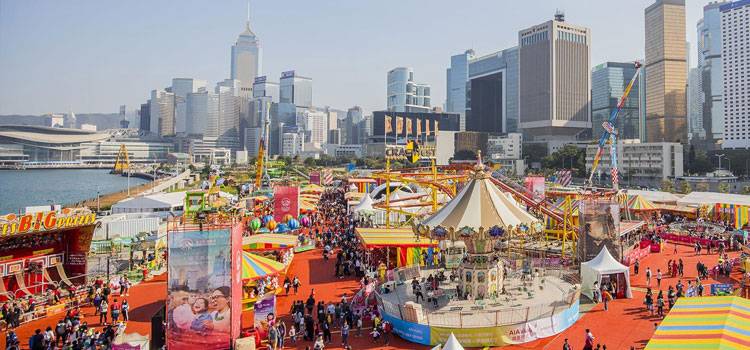
Many people have a fear of flying. I don’t and have flown more than 4 million miles without giving much thought to what could happen.
Yet I have a serious fear of heights. Standing at the edge of a bridge or at the edge of a tall building floods my brain with dread. I know the vertigo is all in the mind, but that realisation does not stop it from being triggered.
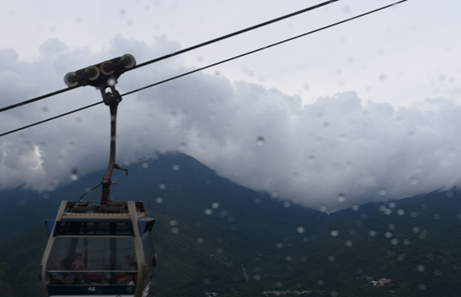
The Cable Car Ride
I had seen the cable cars near the airport on prior trips but was not sure where they went. They seemed to disappear into the clouds. This time I was determined to conquer my height demons and ride in it.
So, on one bright Saturday morning I found myself boarding the cable car. I was with a guided tour group which had arrived there in a small bus. Our destination was the Giant Buddha which was a half-hour ride away.
Six of us entered a cable car as it swung into place. One was a small child, two were his parents, another was his aunt, the fourth was a stranger and then it was me.
As the car began its upward climb, I whispered to myself: If a child can do it, so can you. The ride was slow, long and pure torture. We traversed an interminable number of valleys and peaks. The wind was blowing strongly even on the ground. It was causing the cars to sway. Each car was hanging onto the cable with just three pulleys. Perspiration began to collect on my brow and my hands felt numb.
The child, silent and panicked, had put on the most innocent horrified face imaginable. He was now being cleverly distracted by his parents. I cursed myself for not having packed a book to read. I touched my phone, but it refused to pick up a signal. I knew I could not look outside and began to just look at the other passengers without being intrusive. But they must have sensed my fear and looked the other way, perhaps to suppress an embarrassing smile.
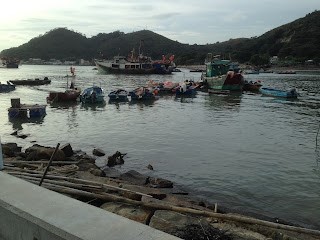 I asked the parents of the child whether this was his first ride. They said it was also their first ride. This yes-and-no conversation petered out very soon. Killing time had never been so difficult.
I asked the parents of the child whether this was his first ride. They said it was also their first ride. This yes-and-no conversation petered out very soon. Killing time had never been so difficult.
The runways of Hong Kong International were now in plain sight and I took some photographs. I looked out at other distant objects, hoping to anchor myself. Finally, our ride ended. I could hardly believe that I had made it all the way through the ride without closing my eyes.
I asked the guide if we would also be taking the cable car back but, to my relief, he said the rest of the tour would be carried out by bus and ferry.
We walked over toward the giant Buddha who sat in total peace with one palm extended upwards on the adjacent hill. He was oblivious to the cable cars that were constantly gliding and swaying in the distance, bringing hordes of tourists to visit him.
We were informed the statue was almost one hundred feet tall, 20 years old and made of bronze. It was built in mainland China.
We went up a flight of concrete steps and entered the giant Buddha. The guide drew our attention to three large paintings on the wall showing his early, mid and late life. They were drawn in the ancient Chinese style, even though the Buddha had never visited China, being a native of Nepal who had spent almost his entire life in India. We were told he passed away somewhere around 500 BC.
Our guide then drew our attention to a very tiny and virtually invisible relic that was enclosed in glass. Pictures were not allowed. He told us that when the Buddha died, he was cremated according to Hindu tradition and that, in the process of cremation, his earthly remains were reduced into 84,000 tiny fragments. Two of these fragments, taken from his toes, now lay in front of us, in this Buddha which was only 20 years old.
After seeing the Buddha from the inside and the outside, we were given a tour of a 500-year-old monastery that was in the large courtyard that was adjacent to the Buddha but built at a lower elevation. It was in a process of renovation and only a small portion could be toured.
Statues of various deities were inside. They were not of the Buddha but of his disciples. The burning incense triggered a cough inside of me and I had to step out momentarily. We were given a chance to light some of the sticks that sat conveniently in a jar at the entrance, pray and donate. Some of the tour group did so. I refrained for fear of setting off that cough again.
After the monastery, we were taken to a small bazaar. Some partook of the savouries from the stalls while others bought cones of a well-known American ice-cream brand which jarred totally with the surrounding Buddhist atmosphere. I wandered around the courtyard and saw men working with ancient tools, bricks and mortar, as they went about their task of refurbishing the decaying edifice.
Having seen everything, I began walking back toward the bus. One of our tour companions came over to me and asked where the tour bus was parked. A woman was with him. I was so happy to finally have someone to talk to on the tour.
The Epiphany
I showed him where the bus was parked, and we began to walk toward it. Along the way, I said that I was a bit disappointed to learn that the Buddha we had seen was only 20 years old. The only consolation was that it looked a lot older. The man responded: “You would also look very old if someone put you on top of that hill for 20 years.”
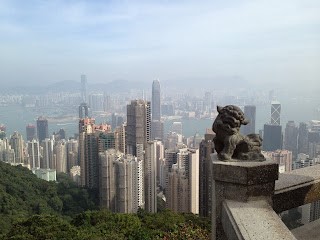 I said I found it very hard to believe that the sacred relic belonged to the original Buddha. He said it was a nice story. To which I said, “But not a story that has any credibility.” Pat came the reply: “Live and let live.”
I said I found it very hard to believe that the sacred relic belonged to the original Buddha. He said it was a nice story. To which I said, “But not a story that has any credibility.” Pat came the reply: “Live and let live.”
Seeing that I was startled, he said: “No one knows whether Moses or Jesus or Muhammad existed, but millions believe that they did. That too is a nice story.” I did not respond. I was not questioning the Buddha’s existence, just the existence of the sacred relics so far from his burial site and so old to have been preserved. But my point was not whether the Buddha existed, but whether these relics could conceivably be traced back to him.
Now we were close to the bus and another English-spoken woman joined the group. To change the topic, I asked the man if the cable car ride had scared him. He said no. I said it was very scary for me.
And he said: “What could have happened?” I said, “A lot of unpleasant things.” And he said: “What is the absolute worst?” When I did not respond, he said: “Well, it could have been flung to the ground by the high winds.” I snapped: “Exactly.”
He said: “Why does that worry you?” I said: “For obvious reasons.” He said: “Why should we be afraid of dying? We are but one tiny speck in the infinite spectrum of time. The world would go on without us just as it has been going on prior to our arrival.”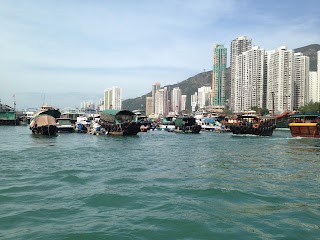
Wow! He was brusque to a fault. The new woman could not hold back her amazement. She chimed in: “But I have so many things left to do in my life,” to which he replied: “Don’t you remember going past that cemetery on the way over. All those people who lie there in eternal repose also had imagined that they had many things still left to do before death overtook them and rendered them silent.”
I never asked him for his name or from where he hailed. When we got back into the bus, anonymity was returned to us. There were no further conversations. What more was there to say? We were just a dot in the spectrum of time.
The Fish Market
The fish market was ancient and next to the sea on which the fishermen’s boats were afloat. The sun had begun to set and the scene was turning into a silhouette.
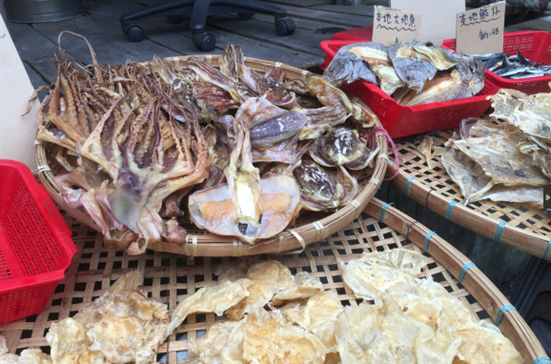 Our guide (who spoke perfect English with no accent but who also informed us that he was born and raised in the houses that dotted the hills above the fish market) took us into the market. The stalls were smelly and congested, as they always are in a fish market. Except that my eyes could not spot any fish. Instead, yellow-coloured objects were hanging everywhere, waiting for the buyer to put in a bid. They looked like large potato chips. I assumed they were some type of local fish and asked the guide as to what type of fish they were. He said: “They are fish bladders.” Whatever appetite I had built up with all that walking vanished.
Our guide (who spoke perfect English with no accent but who also informed us that he was born and raised in the houses that dotted the hills above the fish market) took us into the market. The stalls were smelly and congested, as they always are in a fish market. Except that my eyes could not spot any fish. Instead, yellow-coloured objects were hanging everywhere, waiting for the buyer to put in a bid. They looked like large potato chips. I assumed they were some type of local fish and asked the guide as to what type of fish they were. He said: “They are fish bladders.” Whatever appetite I had built up with all that walking vanished.
Victoria Peak
Earlier in the day, I had gone on another guided tour. This time we had been driven to the top of Victoria Peak from which we had seen the high-rise panorama that constitutes the postcard image of Hong Kong. Immediately beneath us were the high rises of Hong Kong Island. Then there was the bay which contains the iconic Victoria Harbor. In Old Chinese, Hong Kong means “fragrant harbour.” In the distance, loomed the high rises of Kowloon Island where the bulk of the population resides.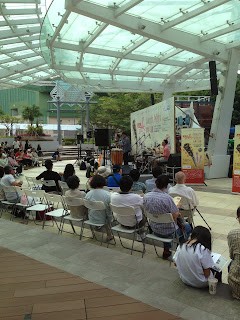
Years later, I returned to Hong Kong and took the world’s steepest funicular railways to the top. It’s been in service since 1888.
Later the tour took us to a place where fishing boats were parked. We toured that portion of the harbour in a festively decorated boat. It was not a sailboat, nor an oar boat but a motor boat. We were informed that fishing had become a dying industry and only 8,000 fishermen remained of the some 100,000 that used to practice that trade decades ago. The sea had been overfished. Fish was now coming in from distant locales such as Korea and Japan and Indonesia and the Philippines.
Our tour gave us yet another view of the high-rises of the city. They seemed to float on the water, like towers of silence in another world.
We sailed past a gaily decorated restaurant called Jumbo’s that billed itself as the world’s largest floating restaurant. I was sure no one would want to eat in such a place.
Stanley’s Beach was quite impressive, and the adjacent market was quaint.
In an enclosure, a band was playing a classic Beatles song. The crowd was swaying and taking pictures and making videos.
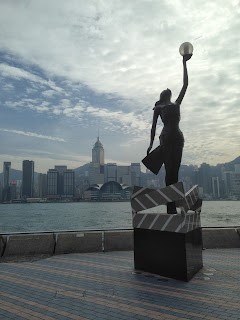 Then I looked around for a place to grab a quick bite. But we had only been given 20 minutes by the guide and all the eating places (including Pizza Express, a British chain) looked crowded. I grabbed the ultimate junk food – French fries and a can of Coke from a stall that was selling “a taste of New York.” On an empty stomach, these fries felt heavenly, despite the liberal dose of salt that had been sprinkled onto them.
Then I looked around for a place to grab a quick bite. But we had only been given 20 minutes by the guide and all the eating places (including Pizza Express, a British chain) looked crowded. I grabbed the ultimate junk food – French fries and a can of Coke from a stall that was selling “a taste of New York.” On an empty stomach, these fries felt heavenly, despite the liberal dose of salt that had been sprinkled onto them.
As I rushed back toward the bus, I lost my way. The stalls all looked alike and there were simply too many of them in such a small place. By asking around, I found my way back to the bus. My walk was interrupted by a photographer who had been with the group and who had taken pictures at Victoria Peak. He showed me mine. It had been burned onto a ceramic dish and looked nice. He said you look handsome. I parted with $20 and took the picture.
The Avenue of the Stars
Earlier in the week, I had toured the Avenue of the Stars both in the daytime and at nighttime. It was right next to the water and its views of Hong Kong Island were dramatic, especially at sunset. Shows of all types were being performed.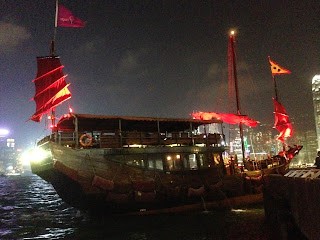
On the water, you would often see a red junk sail past you. It was the last surviving ship of its genre and was painted “fire engine” red.
On the last day, as I was heading to the airport, I saw a large aircraft carrier. I suspected it was American. But it was too far away to make out the name on the bow. Since I had forgotten to pack my mini binoculars, I googled it. It was the USS George Washington. It reminded me that even though America was an ocean away, its weaponry was right in front of my eyes. No wonder that some refer to Hong Kong as the Manhattan of Asia.
Yet I have a serious fear of heights. Standing at the edge of a bridge or at the edge of a tall building floods my brain with dread. I know the vertigo is all in the mind, but that realisation does not stop it from being triggered.

The Cable Car Ride
I had seen the cable cars near the airport on prior trips but was not sure where they went. They seemed to disappear into the clouds. This time I was determined to conquer my height demons and ride in it.
So, on one bright Saturday morning I found myself boarding the cable car. I was with a guided tour group which had arrived there in a small bus. Our destination was the Giant Buddha which was a half-hour ride away.
Six of us entered a cable car as it swung into place. One was a small child, two were his parents, another was his aunt, the fourth was a stranger and then it was me.
As the car began its upward climb, I whispered to myself: If a child can do it, so can you. The ride was slow, long and pure torture. We traversed an interminable number of valleys and peaks. The wind was blowing strongly even on the ground. It was causing the cars to sway. Each car was hanging onto the cable with just three pulleys. Perspiration began to collect on my brow and my hands felt numb.
The child, silent and panicked, had put on the most innocent horrified face imaginable. He was now being cleverly distracted by his parents. I cursed myself for not having packed a book to read. I touched my phone, but it refused to pick up a signal. I knew I could not look outside and began to just look at the other passengers without being intrusive. But they must have sensed my fear and looked the other way, perhaps to suppress an embarrassing smile.
 I asked the parents of the child whether this was his first ride. They said it was also their first ride. This yes-and-no conversation petered out very soon. Killing time had never been so difficult.
I asked the parents of the child whether this was his first ride. They said it was also their first ride. This yes-and-no conversation petered out very soon. Killing time had never been so difficult.The runways of Hong Kong International were now in plain sight and I took some photographs. I looked out at other distant objects, hoping to anchor myself. Finally, our ride ended. I could hardly believe that I had made it all the way through the ride without closing my eyes.
I asked the guide if we would also be taking the cable car back but, to my relief, he said the rest of the tour would be carried out by bus and ferry.
We walked over toward the giant Buddha who sat in total peace with one palm extended upwards on the adjacent hill. He was oblivious to the cable cars that were constantly gliding and swaying in the distance, bringing hordes of tourists to visit him.
I said that I found it very hard to believe that the sacred relic belonged to the original Buddha. He said it was a nice story. To which I said, “But not a story that has any credibility.” Pat came the reply: “Live and let live”
We were informed the statue was almost one hundred feet tall, 20 years old and made of bronze. It was built in mainland China.
We went up a flight of concrete steps and entered the giant Buddha. The guide drew our attention to three large paintings on the wall showing his early, mid and late life. They were drawn in the ancient Chinese style, even though the Buddha had never visited China, being a native of Nepal who had spent almost his entire life in India. We were told he passed away somewhere around 500 BC.
Our guide then drew our attention to a very tiny and virtually invisible relic that was enclosed in glass. Pictures were not allowed. He told us that when the Buddha died, he was cremated according to Hindu tradition and that, in the process of cremation, his earthly remains were reduced into 84,000 tiny fragments. Two of these fragments, taken from his toes, now lay in front of us, in this Buddha which was only 20 years old.
After seeing the Buddha from the inside and the outside, we were given a tour of a 500-year-old monastery that was in the large courtyard that was adjacent to the Buddha but built at a lower elevation. It was in a process of renovation and only a small portion could be toured.
Statues of various deities were inside. They were not of the Buddha but of his disciples. The burning incense triggered a cough inside of me and I had to step out momentarily. We were given a chance to light some of the sticks that sat conveniently in a jar at the entrance, pray and donate. Some of the tour group did so. I refrained for fear of setting off that cough again.
After the monastery, we were taken to a small bazaar. Some partook of the savouries from the stalls while others bought cones of a well-known American ice-cream brand which jarred totally with the surrounding Buddhist atmosphere. I wandered around the courtyard and saw men working with ancient tools, bricks and mortar, as they went about their task of refurbishing the decaying edifice.
Having seen everything, I began walking back toward the bus. One of our tour companions came over to me and asked where the tour bus was parked. A woman was with him. I was so happy to finally have someone to talk to on the tour.
The Epiphany
I showed him where the bus was parked, and we began to walk toward it. Along the way, I said that I was a bit disappointed to learn that the Buddha we had seen was only 20 years old. The only consolation was that it looked a lot older. The man responded: “You would also look very old if someone put you on top of that hill for 20 years.”
 I said I found it very hard to believe that the sacred relic belonged to the original Buddha. He said it was a nice story. To which I said, “But not a story that has any credibility.” Pat came the reply: “Live and let live.”
I said I found it very hard to believe that the sacred relic belonged to the original Buddha. He said it was a nice story. To which I said, “But not a story that has any credibility.” Pat came the reply: “Live and let live.”Seeing that I was startled, he said: “No one knows whether Moses or Jesus or Muhammad existed, but millions believe that they did. That too is a nice story.” I did not respond. I was not questioning the Buddha’s existence, just the existence of the sacred relics so far from his burial site and so old to have been preserved. But my point was not whether the Buddha existed, but whether these relics could conceivably be traced back to him.
Now we were close to the bus and another English-spoken woman joined the group. To change the topic, I asked the man if the cable car ride had scared him. He said no. I said it was very scary for me.
And he said: “What could have happened?” I said, “A lot of unpleasant things.” And he said: “What is the absolute worst?” When I did not respond, he said: “Well, it could have been flung to the ground by the high winds.” I snapped: “Exactly.”
He said: “Why does that worry you?” I said: “For obvious reasons.” He said: “Why should we be afraid of dying? We are but one tiny speck in the infinite spectrum of time. The world would go on without us just as it has been going on prior to our arrival.”

Wow! He was brusque to a fault. The new woman could not hold back her amazement. She chimed in: “But I have so many things left to do in my life,” to which he replied: “Don’t you remember going past that cemetery on the way over. All those people who lie there in eternal repose also had imagined that they had many things still left to do before death overtook them and rendered them silent.”
I never asked him for his name or from where he hailed. When we got back into the bus, anonymity was returned to us. There were no further conversations. What more was there to say? We were just a dot in the spectrum of time.
The Fish Market
The fish market was ancient and next to the sea on which the fishermen’s boats were afloat. The sun had begun to set and the scene was turning into a silhouette.
 Our guide (who spoke perfect English with no accent but who also informed us that he was born and raised in the houses that dotted the hills above the fish market) took us into the market. The stalls were smelly and congested, as they always are in a fish market. Except that my eyes could not spot any fish. Instead, yellow-coloured objects were hanging everywhere, waiting for the buyer to put in a bid. They looked like large potato chips. I assumed they were some type of local fish and asked the guide as to what type of fish they were. He said: “They are fish bladders.” Whatever appetite I had built up with all that walking vanished.
Our guide (who spoke perfect English with no accent but who also informed us that he was born and raised in the houses that dotted the hills above the fish market) took us into the market. The stalls were smelly and congested, as they always are in a fish market. Except that my eyes could not spot any fish. Instead, yellow-coloured objects were hanging everywhere, waiting for the buyer to put in a bid. They looked like large potato chips. I assumed they were some type of local fish and asked the guide as to what type of fish they were. He said: “They are fish bladders.” Whatever appetite I had built up with all that walking vanished.Victoria Peak
Earlier in the day, I had gone on another guided tour. This time we had been driven to the top of Victoria Peak from which we had seen the high-rise panorama that constitutes the postcard image of Hong Kong. Immediately beneath us were the high rises of Hong Kong Island. Then there was the bay which contains the iconic Victoria Harbor. In Old Chinese, Hong Kong means “fragrant harbour.” In the distance, loomed the high rises of Kowloon Island where the bulk of the population resides.

Years later, I returned to Hong Kong and took the world’s steepest funicular railways to the top. It’s been in service since 1888.
Later the tour took us to a place where fishing boats were parked. We toured that portion of the harbour in a festively decorated boat. It was not a sailboat, nor an oar boat but a motor boat. We were informed that fishing had become a dying industry and only 8,000 fishermen remained of the some 100,000 that used to practice that trade decades ago. The sea had been overfished. Fish was now coming in from distant locales such as Korea and Japan and Indonesia and the Philippines.
Our tour gave us yet another view of the high-rises of the city. They seemed to float on the water, like towers of silence in another world.
We sailed past a gaily decorated restaurant called Jumbo’s that billed itself as the world’s largest floating restaurant. I was sure no one would want to eat in such a place.
Stanley’s Beach was quite impressive, and the adjacent market was quaint.
In an enclosure, a band was playing a classic Beatles song. The crowd was swaying and taking pictures and making videos.
 Then I looked around for a place to grab a quick bite. But we had only been given 20 minutes by the guide and all the eating places (including Pizza Express, a British chain) looked crowded. I grabbed the ultimate junk food – French fries and a can of Coke from a stall that was selling “a taste of New York.” On an empty stomach, these fries felt heavenly, despite the liberal dose of salt that had been sprinkled onto them.
Then I looked around for a place to grab a quick bite. But we had only been given 20 minutes by the guide and all the eating places (including Pizza Express, a British chain) looked crowded. I grabbed the ultimate junk food – French fries and a can of Coke from a stall that was selling “a taste of New York.” On an empty stomach, these fries felt heavenly, despite the liberal dose of salt that had been sprinkled onto them.As I rushed back toward the bus, I lost my way. The stalls all looked alike and there were simply too many of them in such a small place. By asking around, I found my way back to the bus. My walk was interrupted by a photographer who had been with the group and who had taken pictures at Victoria Peak. He showed me mine. It had been burned onto a ceramic dish and looked nice. He said you look handsome. I parted with $20 and took the picture.
The Avenue of the Stars
Earlier in the week, I had toured the Avenue of the Stars both in the daytime and at nighttime. It was right next to the water and its views of Hong Kong Island were dramatic, especially at sunset. Shows of all types were being performed.

On the water, you would often see a red junk sail past you. It was the last surviving ship of its genre and was painted “fire engine” red.
On the last day, as I was heading to the airport, I saw a large aircraft carrier. I suspected it was American. But it was too far away to make out the name on the bow. Since I had forgotten to pack my mini binoculars, I googled it. It was the USS George Washington. It reminded me that even though America was an ocean away, its weaponry was right in front of my eyes. No wonder that some refer to Hong Kong as the Manhattan of Asia.

